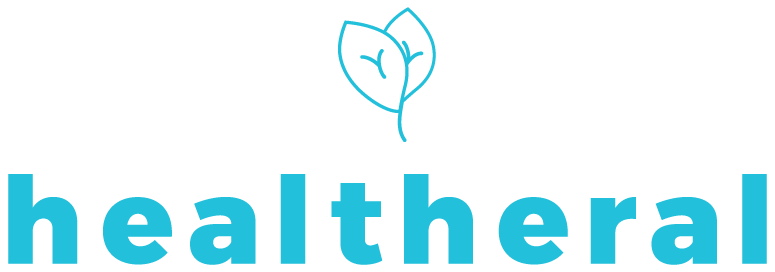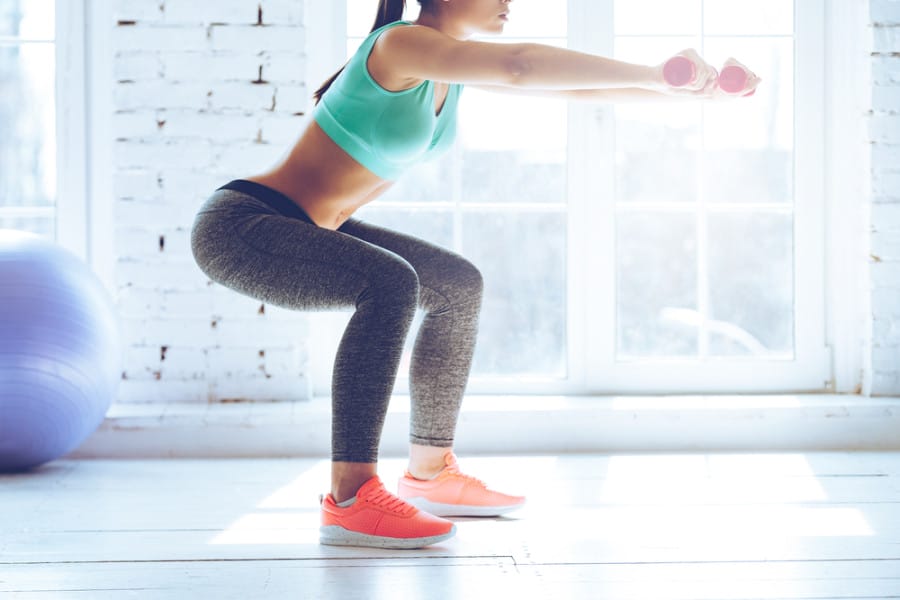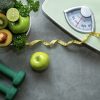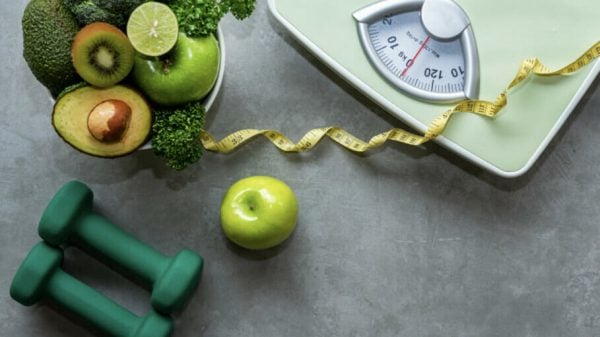Step into any gym, and you’re bound to witness someone utilizing a squat rack or performing squats with a pair of dumbbells in the free weight region. Squats are one of the most fundamental—and functional—movements, which implies they’re not just earmarked for leg day.
“We replicate squats dozens of times every day, from settling into a chair, to entering our car, to lifting a bag of groceries off the ground,” mentions Katherine Kalaj, PT, DPT, a physical therapist at Bespoke Treatments in NYC. “Executing squats in the gym helps us retain the strength we need to manage all of those activities much more effortlessly as we age.”
However, appending squats to your regimen is just as crucial as executing them with the correct form. Here’s exactly how to perform squats, along with common errors, and suggestions and strategies to aid you in modifying or enhancing.
Performing a squat in the correct manner
Prior to integrating weight, you’ll want to master the bodyweight squat with flawless form. Here’s how to execute a basic bodyweight squat:
- Stand with your feet shoulder-width apart, and keep your toes pointing somewhat outward.
- Keep your back straight and either extend your arms straight in front of you, position your hands on your hips, or clasp them together in front of you. (Do whatever feels most comfortable!)
- Subsequently, push your hips back, mimicking the action of sitting into a chair. Bend your knees and lower your body, keeping your back straight and guaranteeing your knees are in line with your toes.
- Lower yourself as far as your flexibility permits, ensuring your weight is on your heels and the balls of your feet rather than on your toes.
- To stand back up, apply pressure through your heels, returning to the initial position.
The muscles you engage while squatting
You may designate them for leg day, but squats are one of the finest full-body movements you can execute. They target your core, which encompasses your abs and back. Various squat variations, such as overhead squats and goblet squats, can also activate your upper-body muscles for a more comprehensive maneuver.
According to the National Academy of Sports Medicine (NASM), squatting engages muscles including:
- Gluteus maximus (largest butt muscle)
- Quadriceps (or quads, for short)
- Hamstrings
- Erector spinae (muscles along your spine and back)
- Inner thigh muscles
- Calves
- Abdominal muscles, including your rectus abdominis (six-pack ab muscles) and your external obliques (side abs)
Squat advantages that’ll persuade you to include them in your regimen
1. Enhanced core strength
Squats certainly develop leg strength and help round out your quads and glutes, but this movement also enhances core strength and balance.
Squats activate various muscles in your core, such as the transversus abdominis, internal and external obliques, and rectus abdominis—strengthening these muscles can help fortify your core.
A robust core can assist in enhancing your posture and balance, and can facilitate making daily activities less challenging.
2. Augmented lower body strength
Squats shape your leg and glute muscles, and the benefits go beyond merely enhancing the appearance of your jeans.
- Stand with your feet wider than hip-width apart, your toes facing slightly outward, gripping a kettlebell by the handle with your arms straight down.
- Keeping your back straight, push your hips back, as if you’re about to sit into a chair. Bend your knees and lower your body, keeping your back straight and making sure your knees are in line with your toes.
- Lower yourself as far as your flexibility permits, ensuring your weight is on your heels and the balls of your feet rather than on your toes.
- To stand back up, apply pressure through your heels, returning to the initial position.
4. Goblet squat
Goblet squats can effectively target your quads to enhance the strength and integrity of your knee joint and the tendons encompassing your knee, in accordance with Kalaj. Holding the weight up in front of you adds an additional challenge for your core stability, she states.
- Hold a kettlebell against your chest with both hands, gripping the handles near the base.
- Keeping your back straight, push your hips back, as if you’re about to sit into a chair. Bend your knees and lower your body, keeping your back straight and making sure your knees are in line with your toes.
- Lower yourself as far as your flexibility permits, ensuring your weight is on your heels and the balls of your feet rather than on your toes.
- To stand back up, apply pressure through your heels, returning to the initial position.
5. Barbell back squat
Barbell back squats are excellent for more seasoned lifters seeking to lift heavier weights to fortify their lower body, core, and lower back, she mentions.
- Set up in a rack with your feet about shoulder-width apart, and the bar resting across your upper back. Grab the bar with an overhand grip (palms facing forward).
- Unrack the bar cautiously and position your feet at a comfortable stance with your feet slightly turned out.
- Keeping your back straight, push your hips back, as if you’re about to sit into a chair. Bend your knees and lower your body, keeping your back straight and making sure your knees are in line with your toes.
- Lower yourself as far as your flexibility permits, ensuring your weight is on your heels and the balls of your feet rather than on your toes.
- To stand back up, apply pressure through your heels, returning to the initial position.
How many calories are burned through squats—and is it even significant?
The calories burned during squatting are contingent on the intensity, duration, and your weight. Bodyweight squats are low-intensity and will consume roughly 20 calories for every 5 minutes. The higher the intensity of the squat, the greater the calories expended.
Additionally, constructing muscle burns more calories over time. Hence, the more muscle mass you possess, the more calories you’ll burn during a squatting session.
It’s vital to focus on the advantages of squats for your body, such as increasing lower-body strength, enhancing core stability, and shaping your glutes, rather than just the calories burned, Kalaj advises.
Confining exercise solely to calories burned can prompt disordered behaviors. It’s essential to include physical activity you relish in your daily routine, ensuring you’re making the best choices for your health, she emphasizes.
Common inaccuracies when squatting
Maintaining correct form when squatting guarantees you’re targeting the right muscles and aids in preventing injury. Assure that your form is accurate by evading these common errors the next time you squat.
1. Your torso is excessively upright
Maintaining your chest up and your gaze directed forward diminishes core engagement, Kalaj conveys. Permit a slight forward lean and select a point on the ground to focus on, she counsels.
2. Your knees cave in
Collapsing of the knees as you squat, or “knock knees,” is a conventional error that can result in knee and ACL injuries. Concentrate on keeping your knees pushed out and parallel to the floor, and contemplate utilizing a resistance band around your knees to aid in keeping them aligned.
3. You overarch your back
Attempting an excessively deep squat without the hip mobility or core stability to support it can lead to an arching of your back, which may contribute to lower back pain and spinal pressure. Maintain your spine neutral and warm up with a hip mobility drill to prevent overarched, Kalaj recommends.
4. You advance your load too swiftly
Escalating the weight you use too expeditiously after mastering your squat form can lead to injuries to your knees, hips, or back, according to Kalaj. It’s crucial to increment weights gradually and ensure comfort and strength with one weight before progressing to the next, she proposes.
Always place emphasis on correct form over ego when it comes to lifting, and opt for lighter weights if you are unable to perform an exercise with correct form, she advises.










